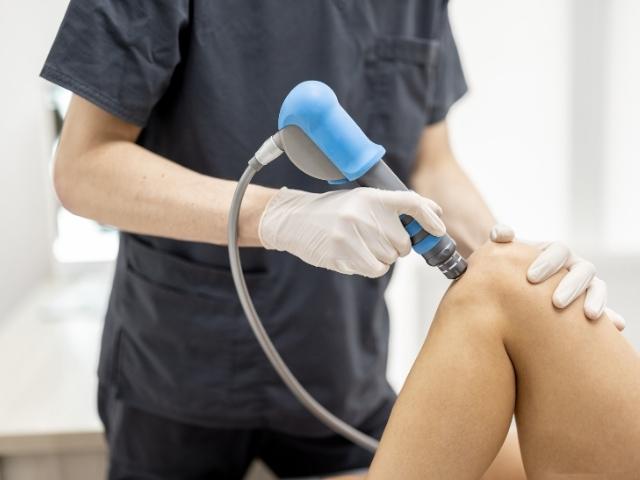- 374-C, Amrapali Circle, Vaishali Nagar, Jaipur
Extracorporeal Shock Wave Lithotripsy
Extracorporeal Shock Wave Lithotripsy
Shock Wave Lithotripsy (SWL), also known as Extracorporeal Shock Wave Lithotripsy (ESWL), is a commonly used procedure for the treatment of kidney stones. This non-invasive procedure utilizes high-pressure shock waves that are directed towards the stones from outside the body, causing them to break down into smaller fragments.
The procedure involves the use of a machine that generates the high-pressure shock waves. The patient is positioned on a table, and the machine is focused on the area where the stone is located. The shock waves are then directed towards the stone, causing it to break apart into smaller pieces that can be passed through the urine.
SWL is considered to be a highly efficient and effective treatment option for kidney stones. It is a non-surgical procedure, which means that patients typically experience less pain and discomfort, and are able to recover more quickly than with other treatment options.
After the procedure, patients may experience some minor discomfort or pain, but this can typically be managed with over-the-counter pain medication. In most cases, patients are able to resume their normal activities within a few days.
Overall, Shock Wave Lithotripsy is a safe and effective treatment option for patients with kidney stones. It is a non-invasive procedure that can be completed in a relatively short amount of time, and can greatly improve a patient's quality of life by eliminating the discomfort and pain associated with kidney stones.


What is Chronic Daily Extracorporeal Shock Wave Lithotripsy
Chronic daily Extracorporeal Shock Wave Lithotripsy (CDH) is a type of Extracorporeal Shock Wave Lithotripsy that occurs for 15 or more days per month, or at least for three months. It can be difficult to manage and affects approximately 5% of the population, according to a recent survey. Most cases of CDH are due to primary Extracorporeal Shock Wave Lithotripsy syndrome. While Extracorporeal Shock Wave Lithotripsys are a common reason for patients to see a neurologist, most Extracorporeal Shock Wave Lithotripsys are not serious. However, some Extracorporeal Shock Wave Lithotripsys can be severe and potentially life-threatening.
Types of Extracorporeal Shock Wave Lithotripsy
Primary Extracorporeal Shock Wave Lithotripsys are those that have no underlying cause, such as tension Extracorporeal Shock Wave Lithotripsys, migraine Extracorporeal Shock Wave Lithotripsys, and cluster Extracorporeal Shock Wave Lithotripsys. Tension Extracorporeal Shock Wave Lithotripsys typically present with mild to moderate tightness or heaviness in the head that can be either episodic or continuous. Migraines, on the other hand, are characterized by severe, throbbing, unilateral or bilateral Extracorporeal Shock Wave Lithotripsys lasting 4 to 72 hours, often accompanied by symptoms such as nausea, vomiting, sensitivity to light, and loud sounds.
Secondary Extracorporeal Shock Wave Lithotripsys, on the other hand, are due to an underlying cause such as brain stroke, hemorrhage, infection, or tumor. If sudden and severe Extracorporeal Shock Wave Lithotripsys are experienced, immediate medical attention should be sought as they could indicate hemorrhage inside or on the surface of the brain.
Symptoms of Extracorporeal Shock Wave Lithotripsys
Have a Extracorporeal Shock Wave Lithotripsy that lasts longer than usual or is different from your usual Extracorporeal Shock Wave Lithotripsy pattern Have Extracorporeal Shock Wave Lithotripsys that interfere with your daily activities or quality of life Experience side effects from your current Extracorporeal Shock Wave Lithotripsy medications Are pregnant or trying to become pregnant and need guidance on Extracorporeal Shock Wave Lithotripsy management Have a family history of aneurysms or other neurological conditions related to Extracorporeal Shock Wave Lithotripsys Are concerned about the frequency or severity of your Extracorporeal Shock Wave Lithotripsys and want to explore treatment options or preventative measures.
Treatment Procedure for Extracorporeal Shock Wave Lithotripsy
It is important to note that while lifestyle changes and alternative therapies can be helpful in managing chronic Extracorporeal Shock Wave Lithotripsys, they should not be used as a substitute for medical treatment. It is essential to consult with a healthcare professional for proper diagnosis and treatment. Additionally, it is important to follow the treatment plan recommended by the healthcare professional and to keep track of symptoms to monitor progress and adjust the treatment plan as needed.
Advanced Facilities for Extracorporeal Shock Wave Lithotripsy Treatment
Amar Jain Hospital (AJH) offers world-class super specialty tertiary care for all kinds of Extracorporeal Shock Wave Lithotripsys, including an Advanced Brain Tumor Centre, Minimally Invasive Spine Surgery Centre, Stroke Centre, Special Clinics for Epileptic, Neuromuscular and Movement Disorders, Interventional Neurology, Neuro Immunology, and Brain Suite. The hospital's Extracorporeal Shock Wave Lithotripsy Clinic is dedicated to providing quality diagnosis and individualized management of Extracorporeal Shock Wave Lithotripsys through various treatment options. The clinic works closely with the patient's personal physician and places a strong emphasis on close communication with referring physicians, recognizing that Extracorporeal Shock Wave Lithotripsy is a chronic condition that requires ongoing treatment.
Positive Approach Towards Extracorporeal Shock Wave Lithotripsy Treatment
Amar Jain Hospital provides specialized tertiary care for various types of Extracorporeal Shock Wave Lithotripsys. In addition to offering services such as the Advanced Brain Tumor Center, Minimally Invasive Spine Surgery Center, Stroke Center, and India's first Intraoperative MRI, they also have a Max Extracorporeal Shock Wave Lithotripsy Clinic dedicated to the diagnosis and treatment of Extracorporeal Shock Wave Lithotripsys.
During the planning stage of treatment, a thorough discussion is conducted with the patient to gather information on their medical history, symptoms, and other relevant details. The discussion includes topics such as the history of Extracorporeal Shock Wave Lithotripsy episodes, frequency and severity of Extracorporeal Shock Wave Lithotripsys, description of the worst attacks, triggers, family history, and analgesic overuse.
Maintaining a diary of pain patterns, frequency, and medication usage can assist in identifying triggers and addressing medication overuse. Experts at Amar Jain Hospital may recommend diagnostic tests to assist with diagnosis and prepare an appropriate treatment plan after studying the entire diagnostic report.
